As immersive design and engineering firm The Elumenati celebrates 20 years in the business, members of the team spoke to blooloop to chart the company’s evolution, highlight standout projects, and signpost the future.
For the past two decades, The Elumenati has been creating, designing and deploying innovative solutions for immersive and interactive experiences, building domes, globes, and social, collaborative XR spaces for clients across entertainment, education and enterprise. The company’s holistic approach to hardware, software, and design creates systems that combine elegance with efficiency.
The GeoDome line combines the company’s proven technologies into streamlined systems. Each comprises an OmniFocus projection system, OpenDome or globe, Elumenati image-generating computer, and WorldViewer content management engine.
The GeoDome concept is focused around the education initiatives that are Elumenati’s passion. The big custom projects that the company undertakes once or twice a year then drive and inform product development and make the less profitable education work possible.
The origins of The Elumenati
D’nardo Colucci, president and ‘Light Plumber’ at The Elumenati,co-founded the company in 2003. He tells blooloop:
“I got my PhD from the University of Arizona in optical sciences. I used to work in instruments- mostly adaptive optics - for telescopes, but then left, and moved to North Carolina. Here, I found what was a dual job. I was halftime at the University of North Carolina. The other half I was working for a company called Alternate Realities Corporation.”

At the University of North Carolina, he worked on VR:
“We did head-mounted displays and tracking systems, big VR experiences. Alternate Realities wanted to take planetariums digital. So, they hired me to do their first lens design to project onto a dome.”
Following this, he left to start Elumenati with co-founder David McConville, who brought a background as a media artist to managing creative services for the company. In terms of The Elumenati’s mission, Colucci says:
“At the base level, we're surrounding people with images. It is technologically relatively simple; we try to use a fisheye lens so that it's just one projector doing the immersive projection, we use simple audio systems. We don't try to do 11-channel surround-audio systems with five projectors blended together. Now and again, we have to, but we don't like to do that because it pulls people into focusing on the technology instead of focusing on the story.
“We are much more focused on letting people tell stories.”
Launching The Elumenati
In the beginning, The Elumenati comprised founders Colucci and McConville:
“David brought in Clayton Hooker, and I brought in Clement Shimizu, who was a graduate student at the University of Minnesota. Early on, the four of us did a big project with the Field Museum that is still working today: a Cambrian Sea brought to life.”
As part of the Evolving Planet exhibit, the Cambrian Seascape exhibit depicts the ‘big bang’ of complex life on Earth around 530 million years ago. Three projection screens combine to create an underwater observatory in a 140° panorama driven by a single Elumenati IG.
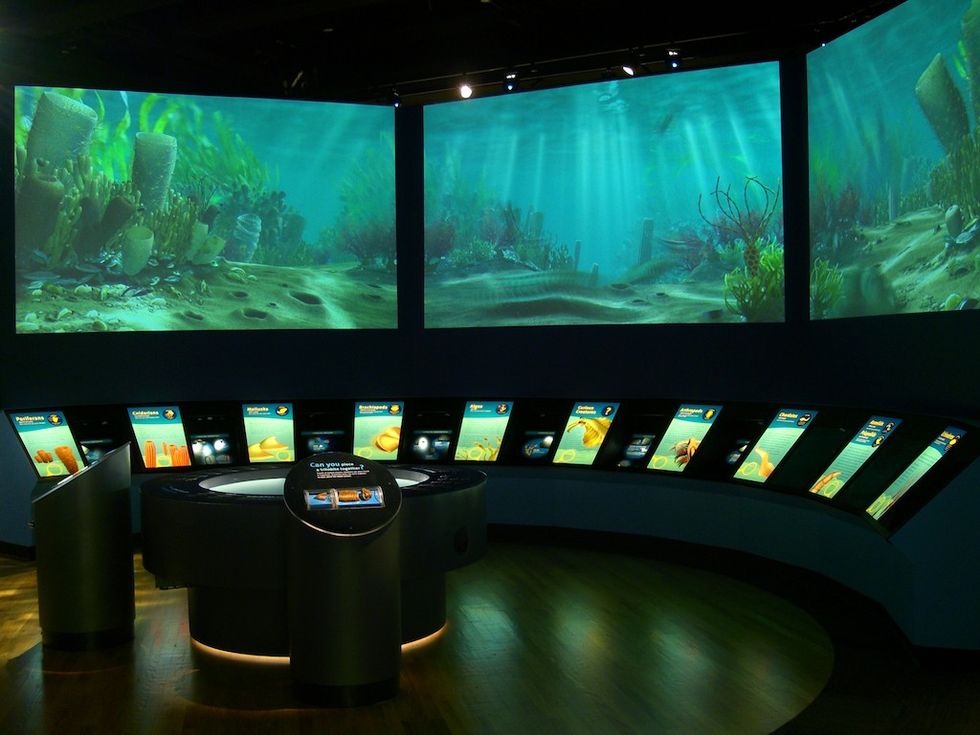
The Elumenati worked closely with the Field Museum designers and Phlesch Bubble Productions, who developed the 5-minute animations of numerous Cambrian creatures. The project launched The Elumenati:
“We were already doing planetarium projection and so on. But the notion that we could do these high-end installations that other people didn't want to touch helped us along. And then we grew over time. We’re nine people; most have been here for over 10 years. It's a pretty loyal crew.”
WorldViewer
The Unity game engine first came on the scene in 2005, after the team completed the Field Museum project:
“We jumped on it right away, because we saw it as a great tool for museums,” Colucci comments. “Going to Unity was a jumpstart for us.”
At this point, NOAA (National Oceanic and Atmospheric Administration) introduced its Science On a Sphere. This was a room-sized global display system using computers and video projectors to display planetary data onto the outside of a six-foot diameter sphere.
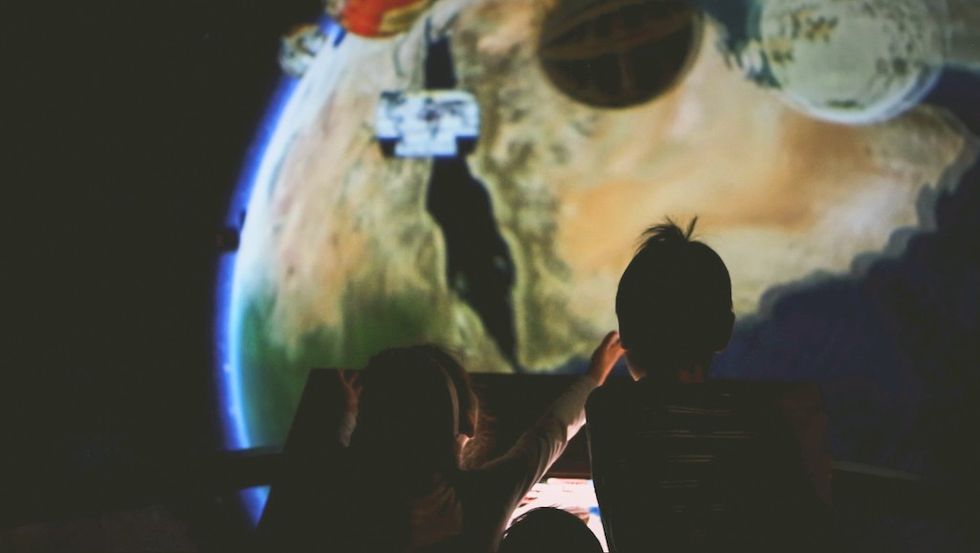
“NOAA bought one of our domes, a Portal. This is a truncated dome screen shaped like a satellite dish where you look inside. They wanted to show their data inside the dome. We used Unity to make the software to do that.”
This was the launch of The Elumenati’s WorldViewer:
“Back then, it was simple. It has since exploded into an immersive content engine - a giant tool that can do anything. Working in Unity made it possible.”
Unity and WorldViewer added interactivity to the Elumenati toolset. Since then, the company has built dozens of interactive installations. Colucci highlights one memorable one:
“We did a four-person broomstick flight trainer, which can be seen on the website. That was so much fun. My son made the broomsticks, I made the hardware out of bicycle parts and trailer hitch strings. We put a six-axis sensor on each broomstick. We had four people racing around a castle trying to get through obstacles. It was a great game.”
Future trends
The future, he predicts, is LED. The company launched its OmniLED line after finding a partner that could make the panels that can do compound curves, he explains:
“Anybody can make a cylindrical screen, but the compound curve tends to look segmented. These guys can get a compound on a much smoother surface. That means we can, finally, do spherical surfaces, which are just so much more immersive than flat and cylindrical screens.”
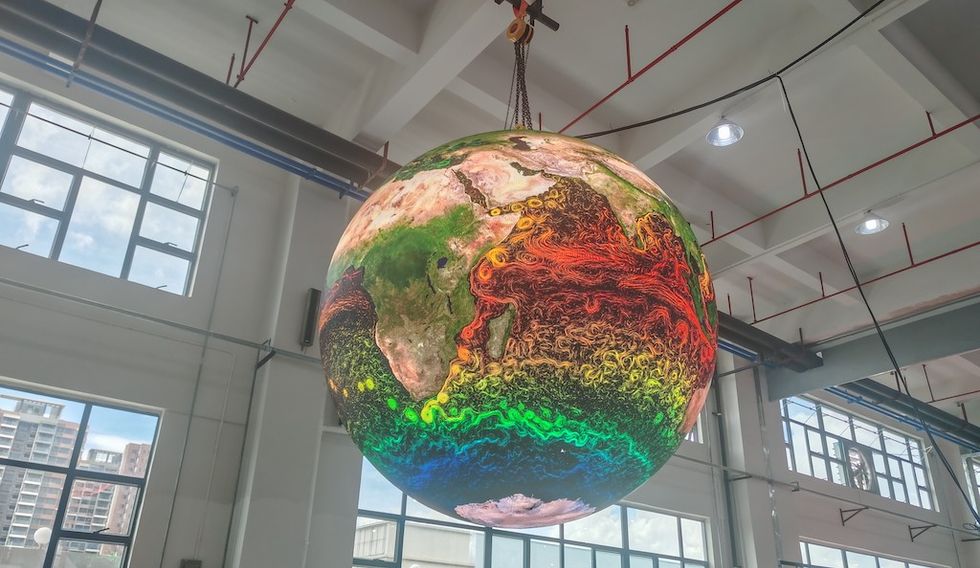
He adds:
“It’s still very high-end. It requires a ton of power; nobody can claim to be green and use LEDs. So, we think there's still quite a bit of life left in projection systems, especially the smaller spheres. We do a dual projection sphere that is really high-res. If you put it in a museum where the lights are controlled, it looks beautiful.
“The LED world is great when you are battling the sun. We're doing a three-metre OmniLED sphere in an atrium in Arizona where there are three storeys of windows, for example. Projection just won’t work in that environment.”
The Elumenati’s GeoDome
Hilary McVicker,‘Communicatrix’, or VP of sales and marketing at The Elumenati, has a background in communications and new media. On McConville’s invitation, she joined The Elumenati in 2008. This was a logical step in a career focused on the meaningful application of interactive technologies.
“I came from the video game industry, where I was most interested in games for learning, games for social change - applications of interactivity that really meant something,” she tells blooloop. “The company was launching the GeoDome as a turnkey product. I was fascinated with the potential for audiences to connect with data-based stories in immersive spaces, especially as our relationships with NASA and NOAA developed.

“I joined to help launch the GeoDome as a product, and that was 15 years ago.”
She outlines the GeoDome system:
“There are two types, immersive and spherical. For an immersive environment, we help the client choose the design that best suits the story they are telling – whether it’s a dome, a panorama, another truncated section of a dome, or a 360° Cyclorama. The spherical displays are acrylic globes with a special screen coating for internal projection.
"Either way, a GeoDome is a turnkey solution consisting of a screen, a projection system using our OmniFocus fisheye lenses, an image-generating computer and our WorldViewer software to drive the content. There is almost always some sort of interactive user interface. The simplest is a touchscreen or a tablet. However, we've proven out all sorts of fun things using emerging tech from the game industry, from Wiimotes to gesture-driven interactivity."
Evolving the immersive trend
In a world where the term ‘immersive’ is overused, the Elumenati design approach affords experiences that genuinely immerse participants in the media.
“Everything is immersive now, but this trend has been a driver for our business. In the same way, there has been an explosion of interest in VR and XR technologies in the past decade. VR for consumers was going to change the world. But while headset-based VR is great, it has limitations, especially for location-based entertainment and museums. As that became clear, more clients turned to immersive environments like ours.
"There’s a huge difference between experiencing virtual reality in a social, collaborative way vs. on your own in a headset, and it’s especially critical for education.
“We can help people to approach immersion effectively. So, rather than being a gimmick, it's a thoughtfully designed experience that serves the content and the user experience.”
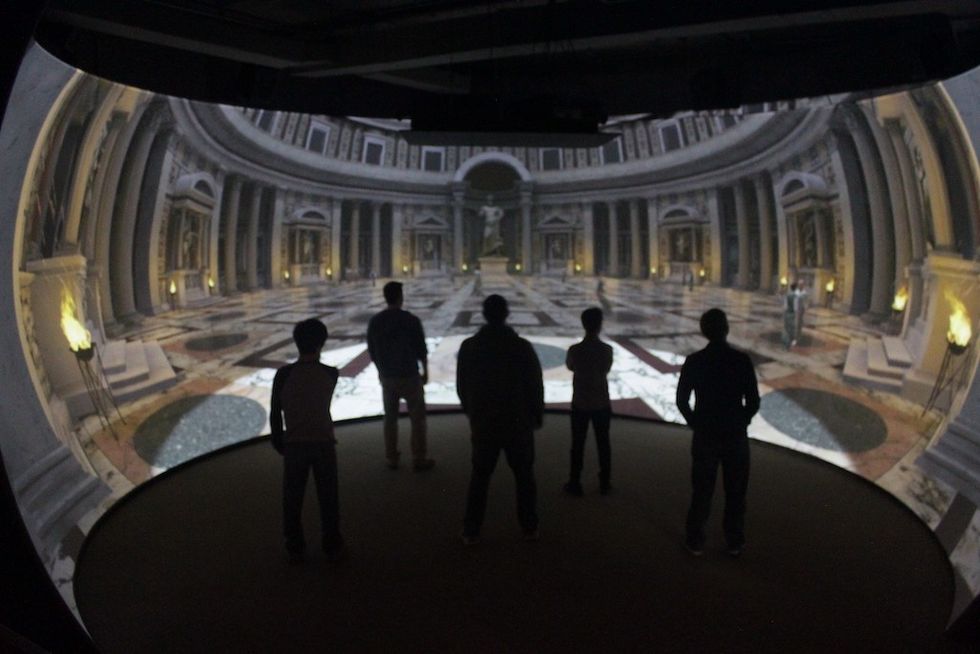
Technical design, she contends, is a big part of this:
“Most of our systems are truncated rather than fulldome – though of course we also do traditional planetariums and other 180° projection. Not only does truncated projection maximize the available brightness and resolution of the projector - but our compound-curved screens also create an upward and downward field of view with a smooth, uninterrupted image that mimics the natural field of view. This places the horizon where it would be in the real world. It creates a sense of presence that is critical in immersing audiences in virtual reality.
“That approach to immersion can be much more effective than shining 10 projectors onto flat walls.”
Innovation at The Elumenati
The entertainment space, McVicker explains, drives a type of innovation that can then be adapted and drawn into educational spaces such as museums to make learning fun.
“That's exactly what we do. The entertainment space requires high production value and creativity. It drives us to innovate, especially in terms of user interface. Those innovations are something that we can then bring into a museum, a zoo or an aquarium.”
Custom projects are essentially an opportunity to do R&D:
“A client will say, ‘Can you do this?’ We say, ‘Sure’ – and then we have to figure out how to do it. Once we’ve done this, we bring it to the broader spectrum of our client base.”
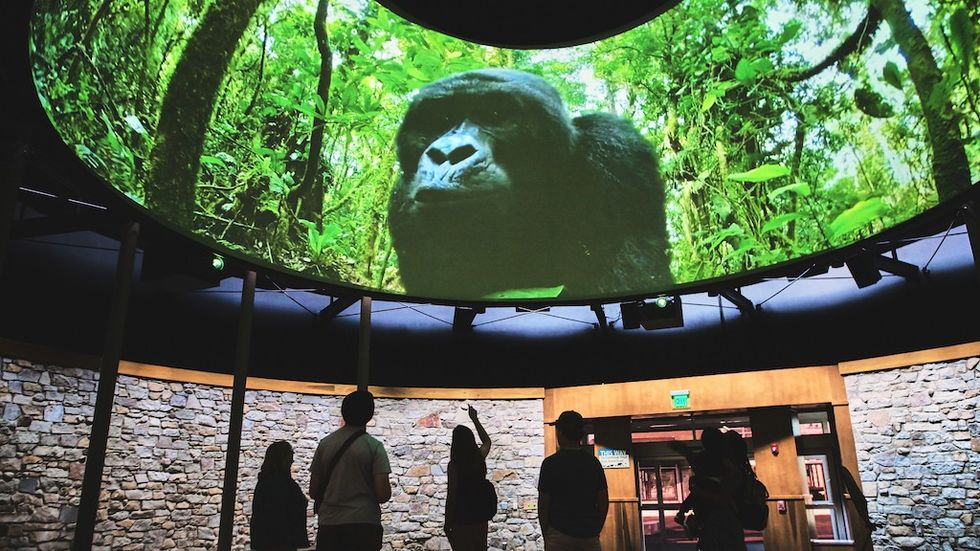
She outlines some standout projects from her 15 years with The Elumenati:
"It’s been an honor to work with leading institutions like The Smithsonian's National Air and Space Museum. Our projects there were driven by our collaboration with NASA, with Eyes on the Earth on a GeoDome Globe, but we added dimension and context to the visitor experience with Elumenati tech. We added a multi-display element so that when guests saw planets displayed on the globe, the cylindrical room’s walls were also lit with 360° satellite images and animations from NASA to explore the planetary surfaces from a feet-on-the-ground perspective.
“The recent project that we did for the Indianapolis Zoo, Our Living Planet, a 360-biodiversity experience, was exciting. It was amazing both in terms of the finished product and the way people responded to it, and the way it pushed the envelope of WorldViewer to run a network of displays over IP. We worked very closely on producing the content.
The company strongly emphasizes client support and building and maintaining relationships:
“Something I’ve enjoyed particularly has been working with clients multiple times over the years.”
Projects for entertainment and education
One such client, she explains, is the North Carolina Museum of Natural Sciences:
“They have a panorama, and a three-storey theatre called The Daily Planet. They initially installed it with another integrator with multiple flat-screen projectors. We were able to replace that with a simpler system, with better image quality. We're continuing to collaborate with them to keep the panorama up to date. Having these longstanding relationships with clients is exciting.”
Another longstanding client relationship is with the American Museum of Natural History. Over the years, their exhibits and outreach have incorporated a GeoDome Theater and OmniFocus projection solutions for several spherical displays. A GeoDome Panorama is now an immersive learning lab in a classroom in the new Richard Gilder Center.
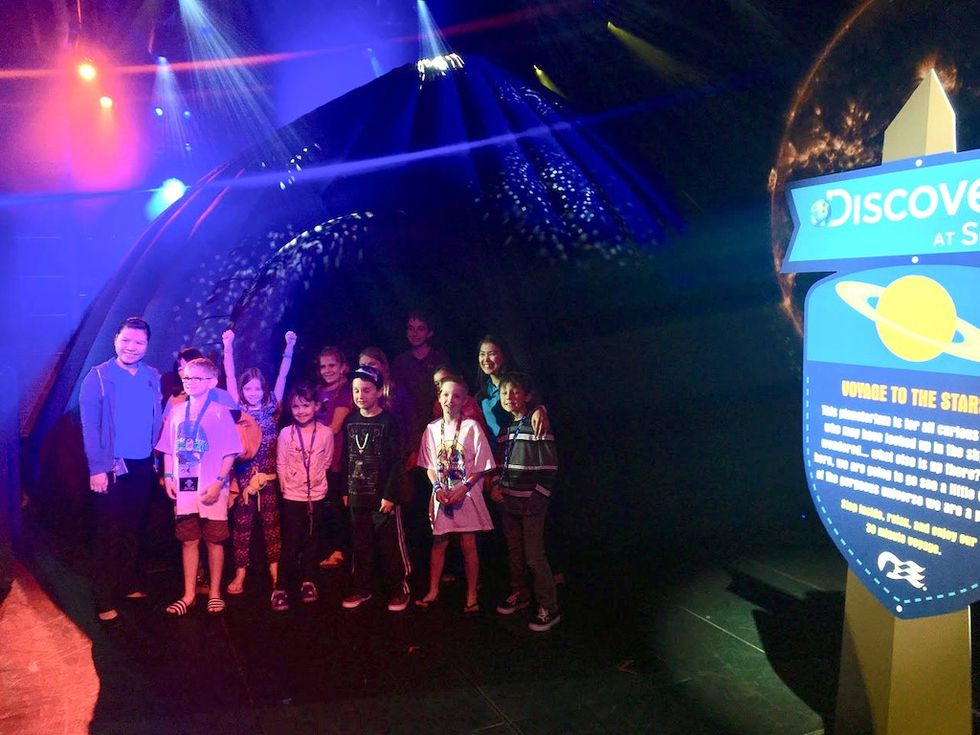
On the entertainment side, she adds:
“We did a project with DreamWorks. That was an immersive sleigh ride to the North Pole, which was inside the DreamPlace holiday houses that they brought to malls around the US and the UK. It was a completely customized Panorama design that created the sensation of flying along with DreamWorks characters to visit Santa.
“That was a lot of fun. And, because we had to scale the operation, it was challenging and helped us to grow as a company.”
Emerging technologies
In terms of emerging technologies, she observes:
“As much as the hardware, the software element has evolved tremendously in our years as a company. In the game industry, it used to be that the budgets needed to produce interactive content were inaccessible for many clients. With the advent of the Unity and Unreal game engines, content creation has been democratised. Even smaller institutions can now access the tools to create high-level content and fun, kinetic ways for audiences to interact with it."
“It has been our goal, specifically in the education world, to make these tools accessible to subject matter experts so that they can tell their stories in immersive and interactive ways.”
WorldViewer is a key element of the company’s success on this level. It’s constantly evolving to incorporate the latest technologies as they come online. It’s relatively simple to use. However, its advanced capabilities make it uniquely powerful as a content management solution for venues of all scales and installations at every level of complexity.
Pushing interactivity to the same level at The Elumenati
Clayton Hooker ’s role as ‘Electron Alchemist’ (AKA VP of development and systems integration) for the Elumenati grew from his involvement in the beginnings of the combination of audio-visual tech and automation in the late 1980s and early 1990s.
“I was playing around in those industries, and started a company doing high-end residential, commercial and venue audio-video systems,” he tells blooloop:

“I then began playing with combining automation and control with A/V and was hooked. My journey into this Electron Alchemy started with using things like stress sensors on a floor joist, so a guest walking down a hallway would become a variable to adjust audio/video or lighting/temperature and create an effect that follows them through the environment. It has been my passion since that time to continually push what we can do next to assist in the experience or interaction of our projects.
“When The Elumenati gets a new client project, whether the client is looking for ideas and can just give me a theme or a storyline, or they have a vision and don't know how to achieve it technically, that is a primary role with the company.”
In terms of how technology is evolving and the opportunities he perceives, he comments:
“The technology is, finally, no longer a hindrance. It’s up to the creativity of the mind how each element can be used to affect the story or offer an interactive component. For instance, we can now do interactivity with AI, cameras and tracking, whereas in the past we had to rely on high-end imaging hardware. It’s become a game of dreaming, versus being limited by technology for the most part.”
Product development
In the beginning, The Elumenati was rooted more in arts, entertainment and live performance. Product development was its route to branching out into its true passion:
“This was involvement with partners in education and outreach for climate messaging, in particular, at the time, and being useful to that narrative,” he explains. “That led us to expand on our own fisheye optic IP and dome technology with what has become a very flexible software toolkit for both outreach and general integration.”
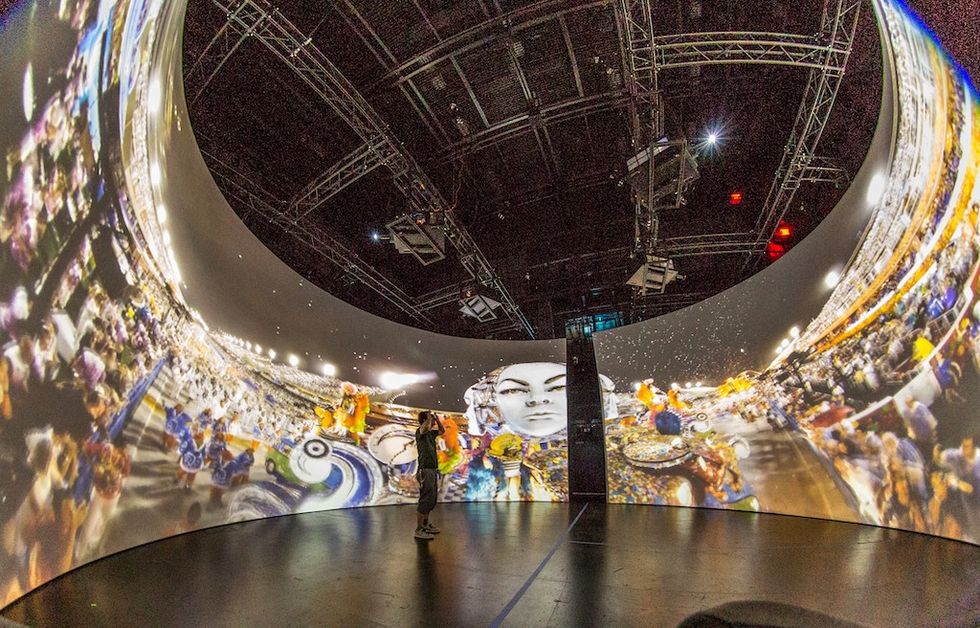
Hooker’s role is management of the software development team, as well as integration design:
“The ability to bring these elements in-house instead of having to rely on components and off-the-shelf software from others is what changed the game for Elumenati,” he says. “We were no longer limited – we could change the tools within Unity, and in addition make our own tools.”
The blurring of borders in the sector has opened up opportunities. Additionally:
“Our business has expanded greatly over the past five years. Even during COVID, we had opportunities to take our software and help others use it for live streaming, in 360 VR headsets, for instance, using the same WorldViewer engine. Since everything in the Elumenati world is spherical anyway, it makes no difference whether it’s a dome or a VR headset.”
Engaging & fun interactions
He turns to the custom work the company has done in the education and entertainment markets:
“Our real motivator has always been, ‘What can we do next? How can we interact? How can we make a new way of playing with these elements?’ There's always a place for linear media of course, but we as a company tend to want to muck with that. We want some way to play with it, to engage with it, so that it's just fun."
“We’ve done things like embed capacitance sensors in a megalodon tooth and other fossils, which we used as the interface for the Fort Fisher Aquarium Megalodon exhibit instead of touch screens and buttons. So as visitors approach these fossils, they pulse and glow, triggering the Unity interactive that surrounds them in a hybrid spherical/flat projection exhibit.”
The Elumenati and NASA
Hooker, along with Dr. Clement Shimizu, has been integral to The Elumenati’s capabilities in systems integration and software development. They have been partners of the Visualization Technology Applications and Development (VTAD) team at NASA’s Jet Propulsion Laboratory for over ten years.
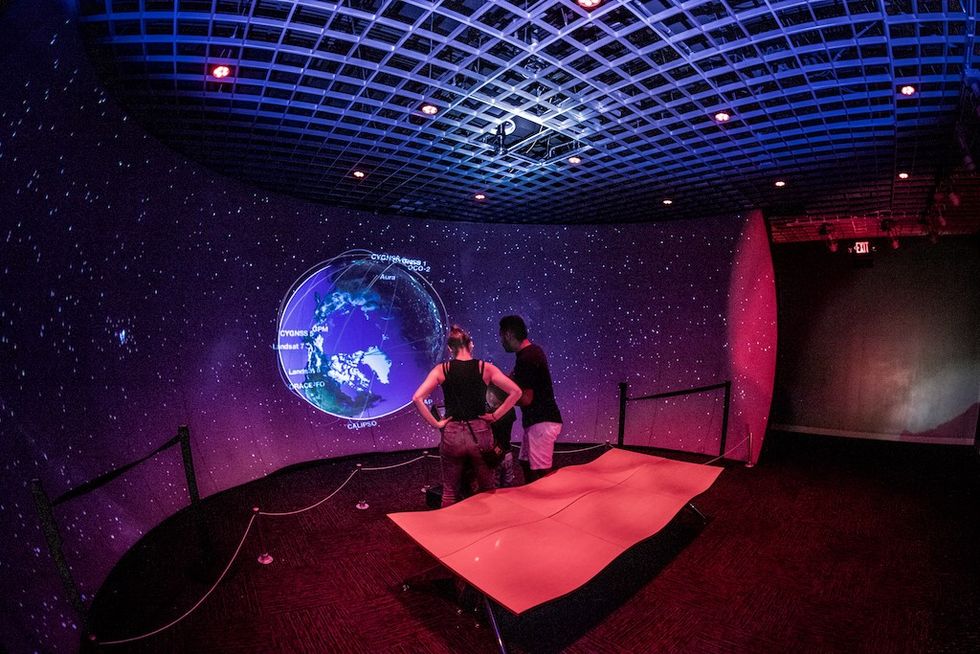
“As contractors for JPL, we’ve had the opportunity to collaborate on the development of NASA's Eyes platform,” he explains. “This came about via Kevin Hussey, who managed the VTAD team for years. He was ex-Disney, so was the right person for that job in that he brought a sense of fun and engagement to the work of science communication. Kevin saw our displays and said, ‘I've got this software project that we're working on. I would like to use it in this type of environment. Can we do that?’
“The answer, of course, was, ‘Yes, we can do that - so how do we do that? Your platform is only currently capable of rendering in flat screen mode…’ We became contractors for the VTAD development team shortly thereafter. Our contribution enables the software to render full 360 environments, as well as video playback onto textures within the interactive. It's been fun to collaborate on it.”
What makes The Elumenati unique?
Returning to The Elumenati, he identifies the company’s main differentiators in the space:
"One is strictly business,” he explains. “We have never taken investment. We have grown organically, which has given us the ability to be extremely agile and to take on the projects we feel are the right fit. That tends to relay itself to our clients. They see that we're not just trying to push what's on the shelf, so to speak. We are also listening to what they're trying to achieve, to their story, and we're able to quickly adapt, come up with a new idea, and implement it.
“Stability and agility, then, are our real strengths.”
To connect with the team at The Elumenati, please get in touch via email.
Top image: GeoDome Globe at Skansen Museum





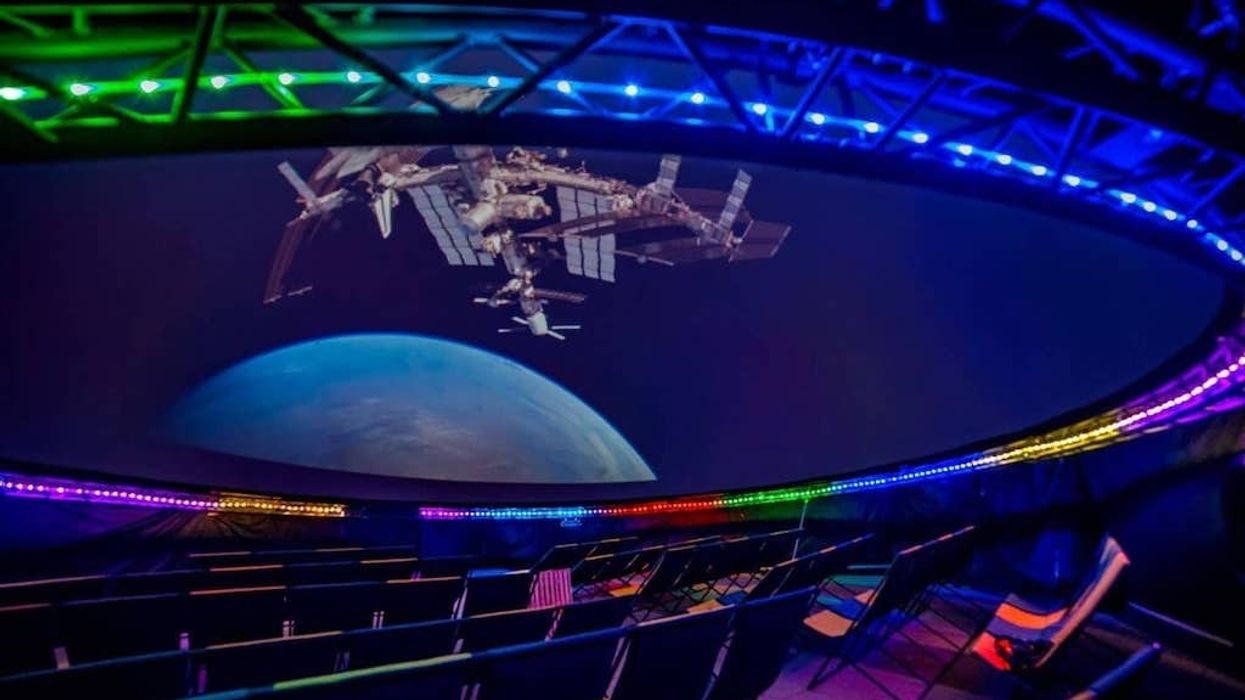
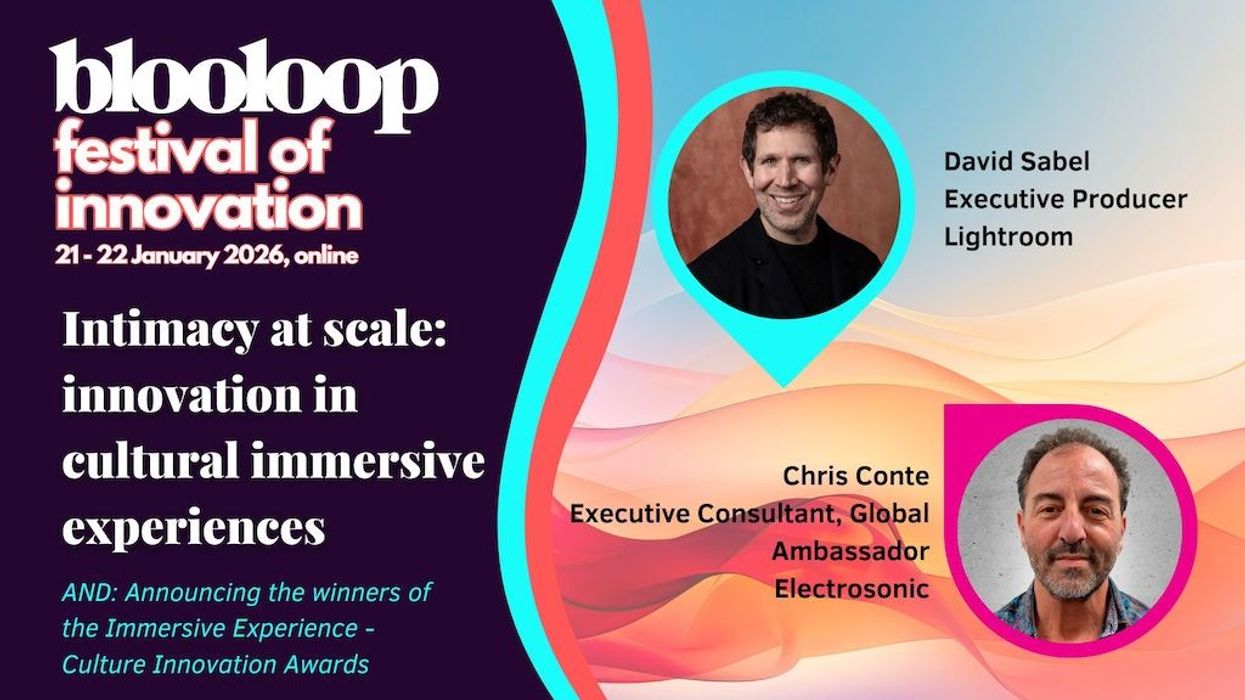


 TM Lim and Adam Wales
TM Lim and Adam Wales



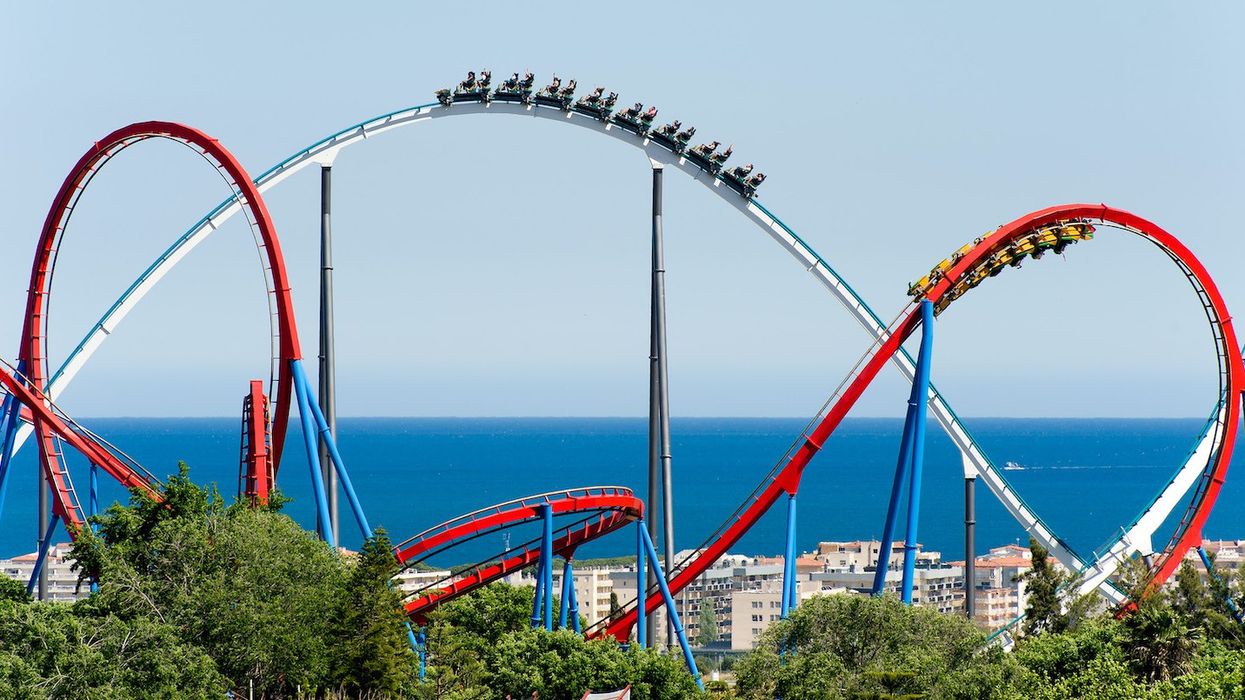


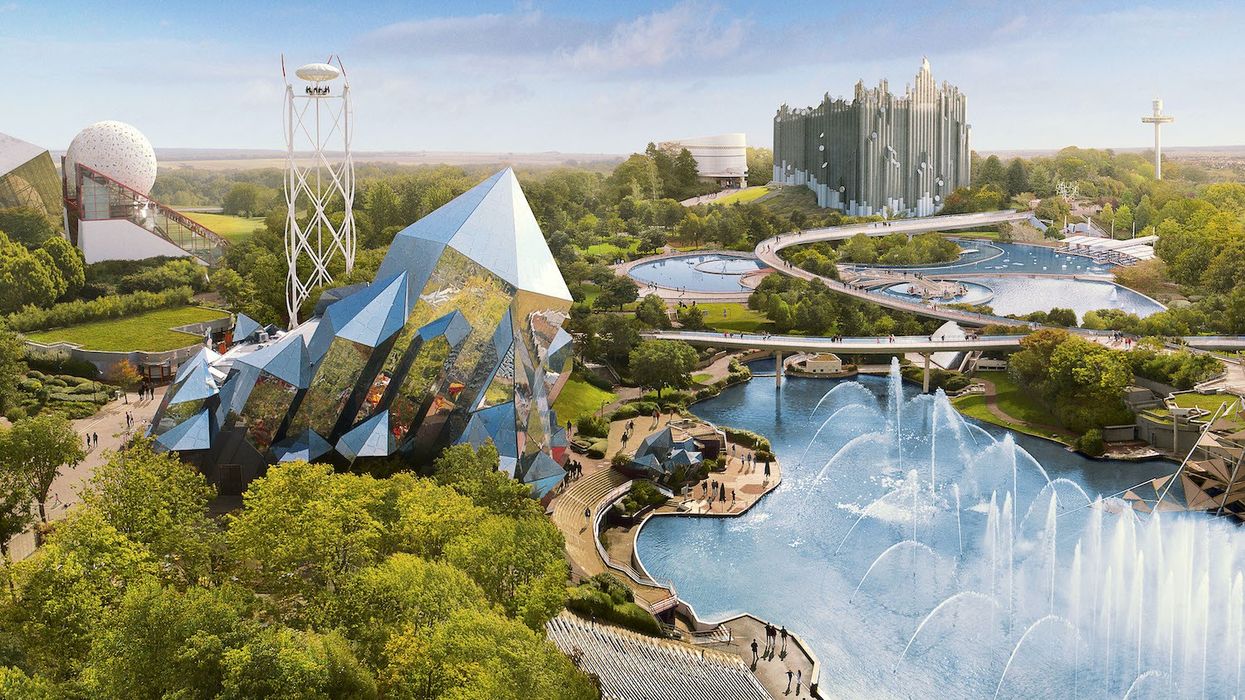


 Toby Harris
Toby Harris Hijingo
Hijingo Flight Club, Washington D.C.
Flight Club, Washington D.C.
 Flight Club Philadelphia
Flight Club Philadelphia Flight Club Philadelphia
Flight Club Philadelphia Bounce
Bounce Hijingo
Hijingo Bounce
Bounce
 Fernando Eiroa
Fernando Eiroa











 Nickelodeon Land at Parque de Atracciones de Madrid
Nickelodeon Land at Parque de Atracciones de Madrid Raging Waters
Raging Waters  Mirabilandia's iSpeed coaster
Mirabilandia's iSpeed coaster Parque de Atracciones de Madrid
Parque de Atracciones de Madrid Ferracci at the ribbon-cutting ceremony for Nickelodeon Land at Mirabilandia, with (left) Marie Marks, senior VP of global experiences for Paramount and (cutting the ribbon) Sabrina Mangina, GM at Mirabilandia
Ferracci at the ribbon-cutting ceremony for Nickelodeon Land at Mirabilandia, with (left) Marie Marks, senior VP of global experiences for Paramount and (cutting the ribbon) Sabrina Mangina, GM at Mirabilandia Tropical Islands OHANA hotel
Tropical Islands OHANA hotel Elephants at Blackpool Zoo
Elephants at Blackpool Zoo  Tusenfryd
Tusenfryd
 Andrew Thomas, Jason Aldous and Rik Athorne
Andrew Thomas, Jason Aldous and Rik Athorne







